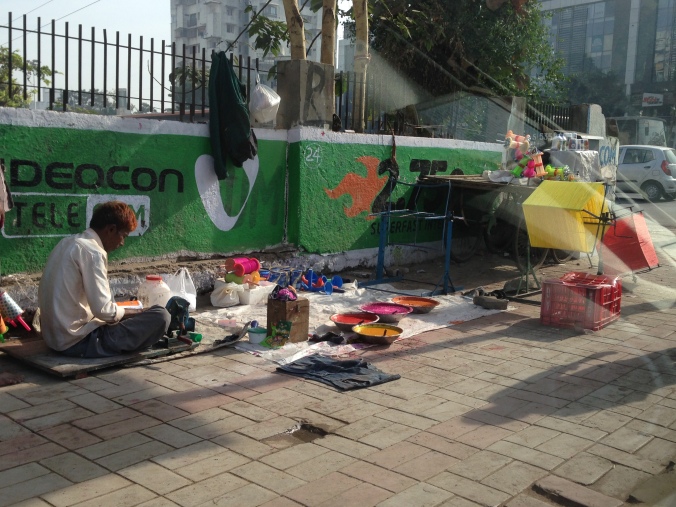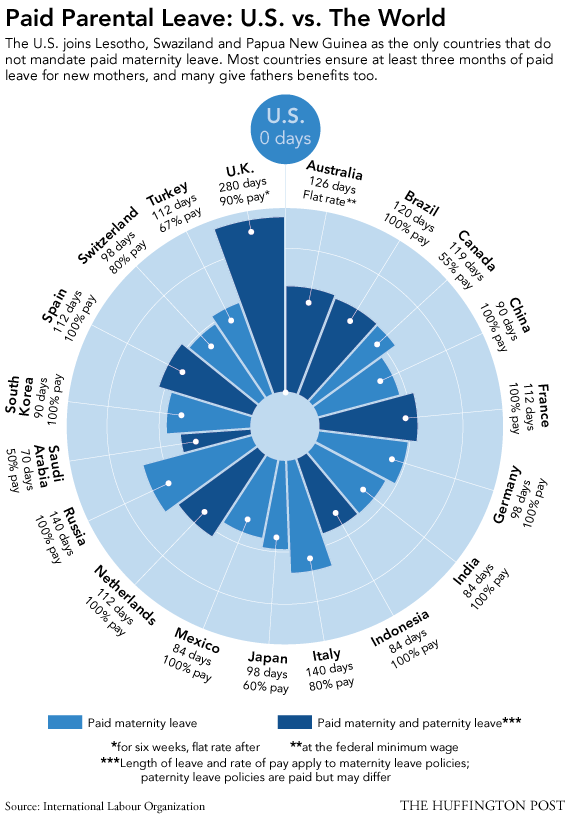You stand on a 3rd story rooftop and take a slow look around. As far as you can see in every direction, over miles of roofs, there are thousands of small paper kites flying through the air. You hear the celebratory whoops of someone who just won a kite fight. You watch the smiles spread on everyone’s faces as new and veteran flyers throw their kites to the wind. This is Uttarayan.
Wende and I just got back from Ahmedabad, the largest city of Gujarat with a population of 6 million. We had gone to visit a friend of ours from the hospital who grew up in Ahmedabad – he told us that we couldn’t miss the city’s celebration of Uttarayan – the kite flying festival. While other cities throughout India celebrate the festival, Ahmedabad is known for having the most elaborate celebrations, to the point of everything shutting down on January 14th (except the kite stalls and restaurants of course).
Our friend was right. Uttarayan was incredible! It was by far, our most unique, fun, and memorable experience in India. Wende and I have already said to each other, whenever we come back to India (in at least 15 years…) we will make sure to come back in time for the kite flying of Ahmedabad 😀
To give you a little background, there are two things celebrated through the festival on January 14th: 1) Uttarayan is a harvest festival that celebrates the turning of winter into summer, 2) Makar Sankranti is the transition of the zodiac calendar into the cycle of Capricorn, which is supposed to start with the winter solstice. You may wonder, if this is supposed to all be about Winter solstice, why is it celebrated on January 14th (and not December 22nd this year)? Well, apparently there are a few different ways to measure astrological timing, and one specific method is used for determining the date of festivals. This method just happens to fail at accounting for the tilt of the earth, leading to some calendar inconsistencies.
It’s a bit of a mystery how kites got wrapped up in the celebrations of this Hindu festival. Some sources say that kite flying was initially a form of sport for kings and royalty that was later picked up by the lay people. Others site an influence from kite flying in Muslim culture, which would account for the fact that Gujarat (which borders the Islamic country of Pakistan) is the Uttarayan, kite-flying, hub of the country. The city of Ahmedabad actually hosts an International Kite Festival (IKF) around the time of Uttarayan that attracts professional kite flyers from all over the world. Wende and I got to stop by, but sadly we missed all of the professional giant kite flyers who had come through on the 11th. I had found out about the International Kite Festival online, but when I asked my friend Paresh if he had attended he said, “Why would I attend? I celebrate the wonderful day with my friends and family in our neighborhood!” After observing the family’s festivities, I can understand why they would prefer it over the tourist attraction of the IKF 😀
But no matter how kite flying got started, in the city of Ahmedbad, kites are now ubiquitous. In the days leading up to January 14th, the streets are lined with temporary stalls meeting all of your kite flying needs. Kites and kite line are the main products, but for those little ones too small to fly their own kite, the stalls also sell small balloons. The parents will tie the balloon to a reel, letting the tots join in the flying festivities 🙂
The kite of choice for most Gujaratis is a called a “Patang” or Indian paper fighter kite. It’s a simple paper kite made out of tissue paper and a few wooden supports. They’re cheap, disposable, light enough to fly in zero wind, and called fighter kites for a reason. When I first heard of people fighting kites, I thought of them ramming kites into one another trying to knock the other out of the sky (which would take an awful lot of control). Instead, “kite fighting” is all about the string.
One of the contraptions you see out in preparation for the 14th, are these big metal spinning racks of neon. The devices are used to create “Manjha” or fighter line for flying the kites. The process:
- Choose line in various thicknesses (chosen based on the size of the kite)
- Run the line through a concoction of flour (for thickening), bright neon colors, and a powder of glass particles
- The line is then wound up on these large metal frames to dry in the sun
- Reel the line onto a spool, and you are ready to fly!
The term kite fighting describes when two kites strings cross each other in midair. Their lines begin to rub against one another as each person tries to keep their kite afloat, and the glass particles in each line begin to cut away at the strings. Whoever’s line is strongest cuts through and releases the losers kite to slowly drift down to a rooftop below. The winners let out hoots of triumph, and the fallen kite will find a new life when someone else finds it and flies it.
While the Manjha is beautiful to look at and very effective at cutting other kite lines, it is also very effective at cutting your hands. You’ll notice veteran kite flyers with fingers taped up in white sports tape to allow maximum speed kite reeling without the nasty paper cuts that come along with it. Wende and I each got a few small cuts, but apparently not enough to be impressive. Our friend Paresh told us that when he was younger, him and all of his friends would come to school bragging about how many cuts they had gotten the day before – “See, I have 7 cuts!”

Notice the racks for Manjha in the right corner, and the bowls of neon string concoction in the middle along with spools of finished line
After a morning full of kite flying, we took a break for a traditional Gujarati Uttarayan lunch. Since the festival is a harvest festival, they celebrate with a dish called Undhiyu, which incorporates all of the vegetables currently available to harvest (which in the middle of January is a surprisingly large number). Undhiyu comes from the Gujarati word for upside down, because the diverse vegetable dish used to be cooked in an earthen pot that was then turned upside down, placed in the ground, and cooked with fire from above. I can’t speak for every Undhiyu, but the dish that Paresh’s mother prepared was one of the best dishes I’ve had in India. I had seconds, thirds, and then I even had a little of the leftovers along with dinner.
After lunch we headed out to visit Paresh’s wife and new baby. This gave us a chance to drive through Ahmedabad and the surrounding country, observing the flying festivities from the ground. Kite fight victims littered the ground and kite lines hung from many of the trees. The hanging, glass coated strings are so prevalent that the kite vendors also sell metal guards that attach onto your scooter/motorcycle. Apparently the lines are quite dangerous (especially for choking), and the guards help to push the string up and over the drivers head. As we made our way to Nirali’s home, I was able to observe a neat phenomenon. You could tell the population density of an area by the number of kites flying over a neighborhood, and as we made our way into the country we passed fewer and fewer flocks of kites.
After a lovely visit at Nirali’s we made our way back to the city for the capstone event. We thought that as the day came to an end, so would the activities, but we were wrong. Apparently a few years back the custom of releasing imported Chinese lanterns in the evening caught on, and now they are just as omni-present as kites during the day. As the sun begins to set, the sky becomes dotted with the light of paper lanterns from rooftops across the city. Within an hour the sky is filled with lanterns everywhere… at first glance it looks like a typical night sky, full of stars. But then you start to notice that the stars are drifting slowly towards the west. You realize that each of those lanterns, from every rooftop, represents a family just like your own, standing on their roof, celebrating together, loving each other, and releasing a lantern together hoping that 2015 is the best year yet.
Fireworks are fired off, hours pass, and the number of lanterns begin to diminish. But as the lanterns go down, the night flyers come out! Dance music pumps from one of the rooftops (accompanied by some club quality disco lights), and the beat bumps while everyone releases fresh kites to the wind. At night, everyone has to use white kites because otherwise they’re impossible to see as they soar up hundreds of feet into the air. The wind picked up at night, and Wende and I were able to get our first solo kites flying (after a full day of enthusiastic attempts).
After one of our most wonderful days in India, Wende and I were left wondering, “How can we bring this holiday back to America?” The kite flying, the fireworks, the lanterns, the fun! At first we thought about just celebrating Uttarayan in America… but January isn’t exactly prime time for kite flying. Then we considered just shifting the date of celebration to some other arbitrary day… but it wouldn’t be fair to the festival to celebrate it on a random, non-symbolic day.
What we’ve decided, is that instead of trying to bring Uttarayan back to America, we’re going to try to twist a current holiday into something new. From now on, 4th of July will not only be celebrated with fireworks, hotdogs, and veggie burgers. It will now also include Indian Fighter Kites, paper lanterns, and some of the terrific spirit we experienced on January 14th, 2015.
Next independence day, if you hear someone whooping in the distance, you might have just heard a kite fight.
*** Witness the magic of Uttarayan***










































